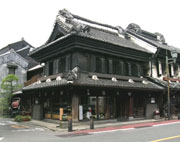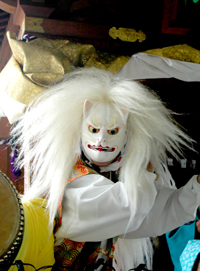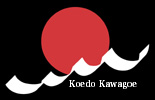 | A Kura-Style Townscape Reminiscent of the Edo to Meiji Period
‘Ichiban Gai’ is a town that is lined with Kura-style buildings composed with big roof tiles, black ‘shikkui’ plaster walls and thick gatefold doors.
Each house looks similar, but is constructed differently to create a unique and noble apperance. The residence of the Osawa Family, built in 1792, is the oldest and has been specified as Kawagoe’s sole cultural asset of Japan.
During the Edo Period, the construction of the Kura-style buildings became popular as it was strongly resistant to fires. Soon this style flourished among Kawagoe merchants as well. Most Kura-style buildings found today have been built after the big Kawagoe fire in 1893. There are still approximately 30 that remain.
The Great Kanto Earthquake in 1923 and the war that followed caused the Kura-style construction to disappear from Tokyo. The Ichiban Gai area was an important historical legacy that inherited Edo scenery and on December 1, 1999, it was chosen as a preservation area for important traditional monuments. The old western style building of Saitama Resona Bank was constructed in 1918. In recent years, the town has been developed so the new and the old will harmonize as new buildings have been constructed in a way not to destroy the overall scenery.
At the ‘Kura-Style Building Museum’, which was built after a cigarette wholesale store, you can see various information from the structure of the Kura-style construction to the location of each Kura within the premises.
|










